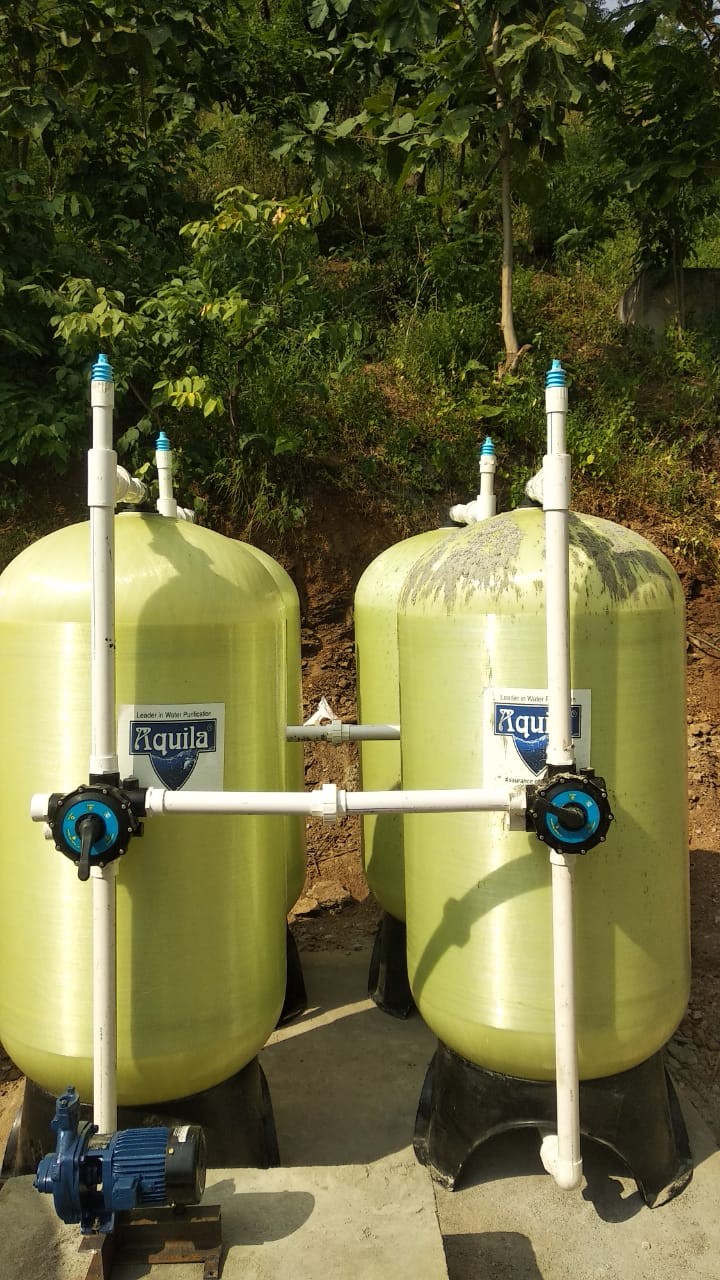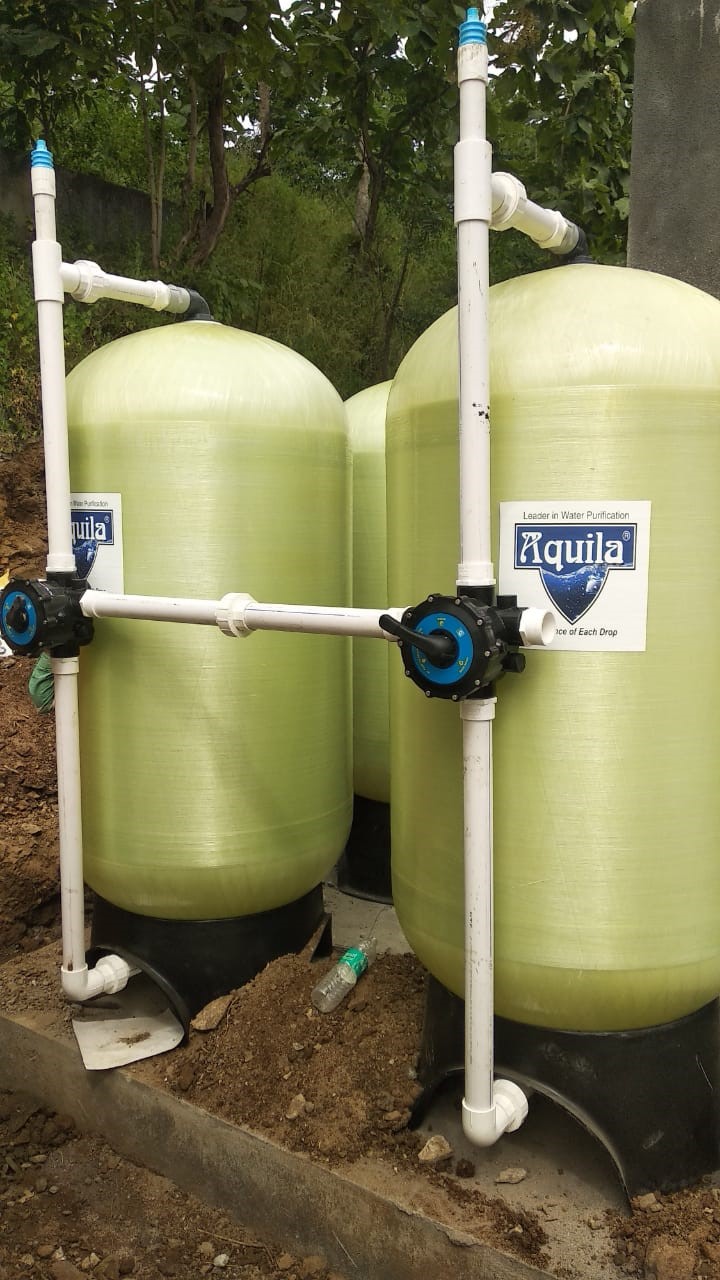Activated carbon filters are commonly used in the removal of organic compounds and/or the extraction of free chlorine from water, making it safe for discharge or use in manufacturing operations. When organics like humic and fulvic acid are removed from potable water, chlorine in the water is prevented from chemically interacting with the acids and generating trihalomethanes, a family of recognised carcinogens.
As with any water treatment technology, activated carbon (AC) filtration is not capable of removing every form of contamination. Sodium, bacteria, fluoride, and nitrates, for example, are not eliminated by AC filtering. Water softening is also not possible using AC filters. Furthermore, heavy elements like lead can only be removed using a specialised type of activated carbon water treatment, which is normally found only in household point-of-use filters.
For industrial filtering systems, there are many different types of high-tech Activated Carbon Filter for Water Treatment . Depending on the stratum from which it is obtained (e.g., bituminous or anthracite coal, bone char, coconut shell) and how it is made, activated carbon can have a wide range of performance characteristics. The technologies utilised to make the various AC materials are highly proprietary, resulting in substantial variances throughout the industry's media. Aquila can recommend high-tech filtering methods for the contaminants found and the purity level necessary. This is why it's so important to choose the right activated carbon bed for the job. This will result in the most efficient filtering and the equipment's longest use interval.
Organic activated carbon sources include coconut shells and coal (anthracite or bituminous). When an organic source is burned in an oxygen-depleted atmosphere, carbon is produced. This procedure removes heavy organic molecules, leaving only around 30% of the organic material intact. The organic matter must be "activated" before it can be utilised for water treatment. The activation step opens up the carbon's huge number of pores, allowing undesirable molecules to escape. The open pores allow the carbon to bind to pollutants, a process known as "adsorption." For a surface area of just one pound of AC, the rate of adsorption is equal to 60-150 acres!
| Activated Carbon Filter PLANT TECHNICAL & DESIGN FEATURES | 1 M3/hr to 400 M3/hr |
| Diameter (Vertical Vessel) | 0.2 Mts. - 4 Mts. |
| MOC | FRP / Mid Steel / Stainless Steel Coating / lining : Epoxy / FRP / Rubber Lined |
| USAGE | Organic Matter,Chlorine,Colour,Odour REMOVAL |
| Design Pressure | Up To 10 Bar |
| Working Pressure | 1.1 to 3.5 Bar |
| Operational Valve | Automatic/Manual |
| OPERATION TYPE | MULTI PORT VALVE / FRONTAL PIPING |
| distribution system | FRP/Strainer Plate |
| Flow Measure | Rotameter/ Flow meter |
| Pressure Measure | Pressure Guage,Diffrential Pressuere Transmitter |
| MEDIA GRADE | 600 IV TO 1100 IV |
| MEDIA TYPE | GRANUAL ACTIVATED CARBON |


There are two primary techniques for activation:
Steam Activation - Steam activation is done at temperatures ranging from 800 to 1000 degrees Celsius. An immediate Water-Gas reaction happens at these temperatures, gasifying the carbonised substance. The vapours are subsequently burned off with air, but the carbon is not burned. This method generates activated carbon that has been graded, screened, and dusted. Steam-activated carbon has a fine pore structure, making it perfect for adsorbing both liquid and vapour phase chemicals.
Chemical Activation - Chemical activation involves filling the carbon with a potent dehydrating agent, such as phosphoric acid (P2O5) paste or zinc chloride (ZnCl2). To activate the carbon, the paste is heated to temperatures between 500°C and 800°C. Chemical activation creates activated carbon with a porous structure that is better suited to adsorbing big molecules.
Activated carbon water treatment is primarily utilised for two objectives, both of which act in very distinct ways.
1. Chlorine Removal: Chlorine can be removed using activated carbon with little deterioration or damage to the carbon. Dechlorination happens quickly, and flow rates are usually rather high. However, this process necessitates a large amount of surface area, and organics in the water will eventually clog the carbon pores. The activated carbon filter will eventually need to be replaced since its ability to dechlorinate the water will deteriorate. Reactivation of spent carbon is possible; however, reactivated filters should only be utilised in waste-water treatment applications.
The low running costs and theoretical "fail safe" operation of air conditioning are two advantages. One downside is that, because the chlorine is removed from the top layer of the media, the AC creates a wet atmosphere conducive to bacterial development and proliferation. Bacteria can cause issues in medical applications and when carbon is used as a reverse osmosis pretreatment.
2. Organic Matter Removal: When water runs through an activated carbon filter, organic particles and chemicals are held inside by a process called "adsorption." The adsorption process is influenced by five important factors: 1) activated carbon physical properties (surface area and pore size distribution); 2) carbon source chemical makeup (amount of hydrogen and oxygen); 3) contaminant chemical makeup and concentration; 4) water pH and temperature; and 5) the length of time the water is exposed to the activated carbon filter (called empty bed contact time or EBCT).
Physical Characteristics: Pore size and distribution have the biggest influence on AC filtering efficiency. When carbon pores are just large enough to allow for pollutant adsorption, the optimum filtering occurs (Figure 1). The type of impurities attracted by an AC filter is determined by the filter's pore size, which varies depending on the type of carbon employed and the activation process. Organic compounds with bigger molecules are best removed by AC filters.
Chemical Properties: Organic molecules may interact chemically with the surface of an activated carbon filter. Ion exchange or adsorption may occur as a result of electrical forces between the AC surface and the chemical composition of some pollutants. The chemical properties of the AC filter are mostly determined by the activation process, making the filter receptive to diverse pollutants. Activated carbon will have varying chemical characteristics depending on the activation procedure. AC with the least amount of oxygen in its pore surfaces, for example, will absorb chloroform the best.
Contaminant Properties: Activated Carbon is ideal for removing big organic compounds. Because AC and organic molecules are comparable materials, they will gravitate toward one other. As a result, organic compounds will be more likely to bind to the AC filter rather than remain dissolved in water. Organic compounds that are less soluble are more likely to be adsorbed. Organic molecules that are smaller fit into the smallest pores and are held the tightest.
Concentration: The concentration of organic pollutants might alter the adsorption process. When it comes to chloroform removal, for example, one AC filter may be more successful than another at filtering high concentrations of pollutants while being less effective at filtering low amounts. Determine how an activated carbon filter will work at various concentration levels for a certain chemical by consulting the manufacturer.
Temperature and pH of the water: : At lower temperatures and pH levels, the rate of adsorption is usually faster. Water temperature and pH are directly related to chemical reactions and chemical formations. Organic compounds become more adsorbable as temperatures and pH levels fall in most circumstances.
Length of Touch: The amount of time a pollutant is in contact with the AC filter affects the adsorption process; the longer the contact time, the more contaminants are removed. The filtration process will be more successful if there is more active carbon and the flow velocity is slower. Design characteristics such as bed depth and flow rate are crucial.
The empty bed contact time, or EBCT, of water in contact with the carbon bed is frequently specified in carbon filtration.
Activated carbon filters are comparable to multi-media filters, except they don't have the air scour stage in the backwash. Higher filter vessel side shells may be employed to offer deeper carbon beds for extended reaction durations, as certain organics require a longer exposure time to the filter to be eliminated. Backwashing carbon beds helps remove trapped silt, prevents packing and head loss, and removes carbon fines formed by granule friction.
As previously said, there are numerous aspects to consider while developing a filtering system and selecting the right carbon for the job. Aquila can assist in the provision of these systems because they have years of experience. For more information, please contact us.
Copyright Ⓒ 2021 All Right Reserved | Optimize by Best SEO Company in India - ARE InfoTech